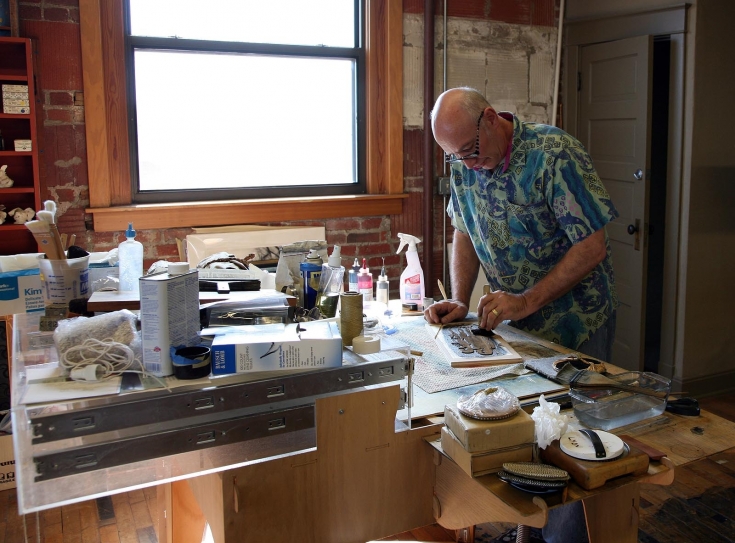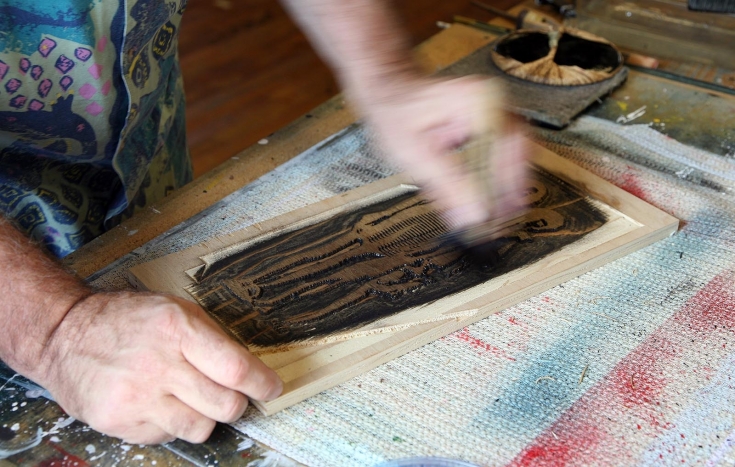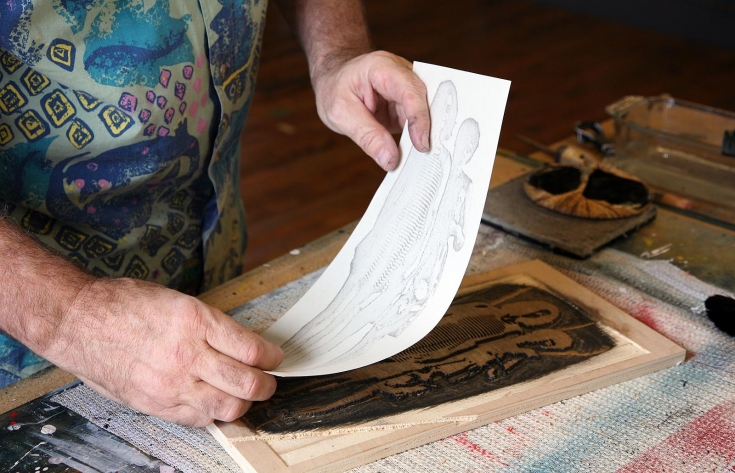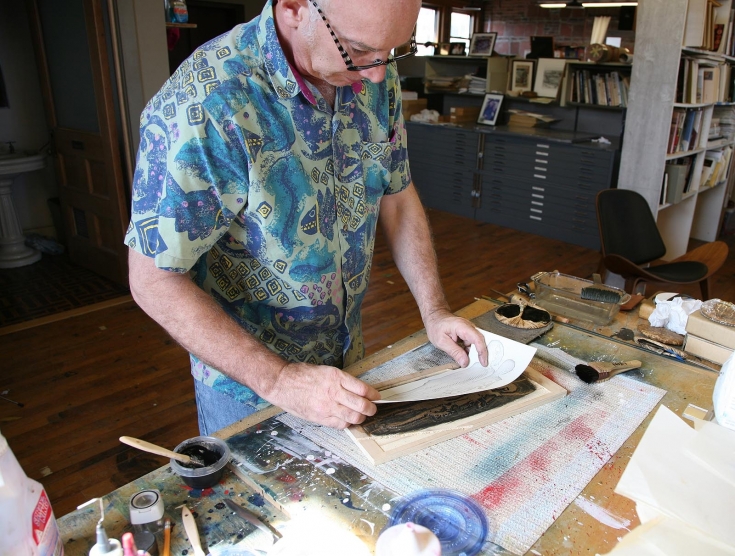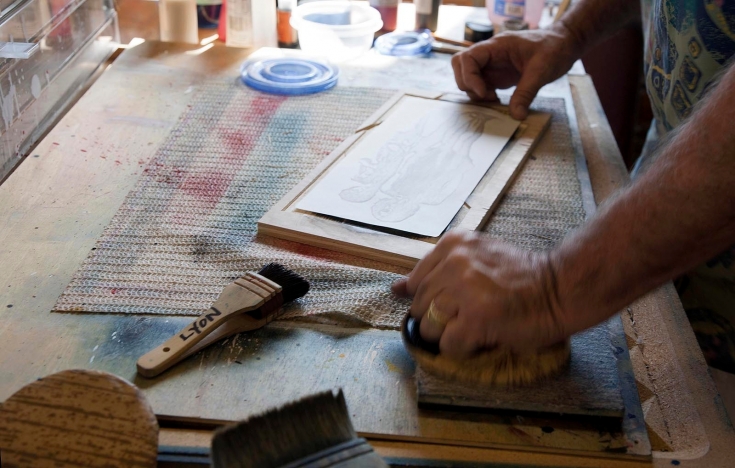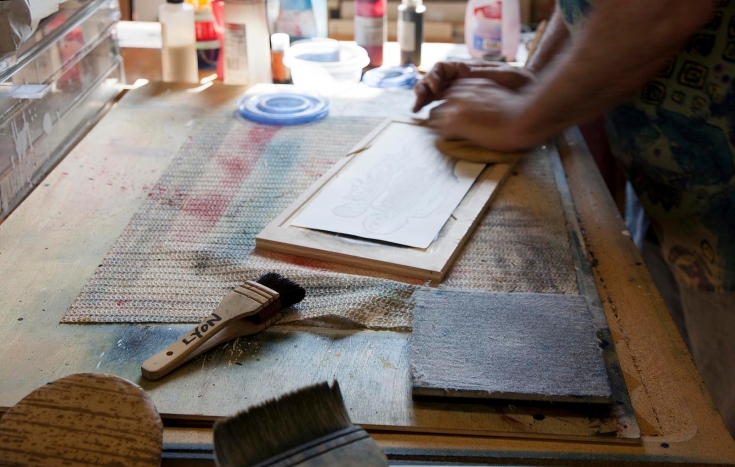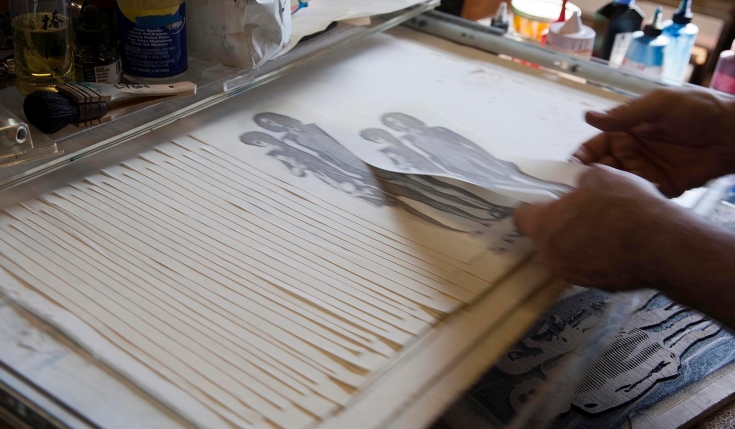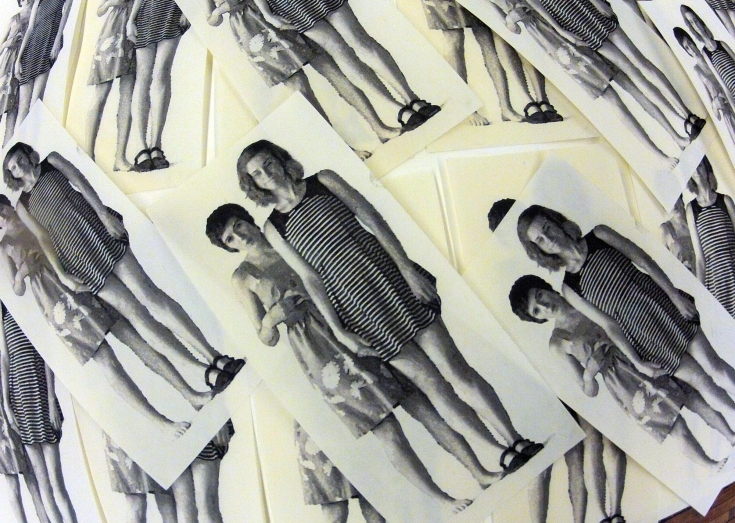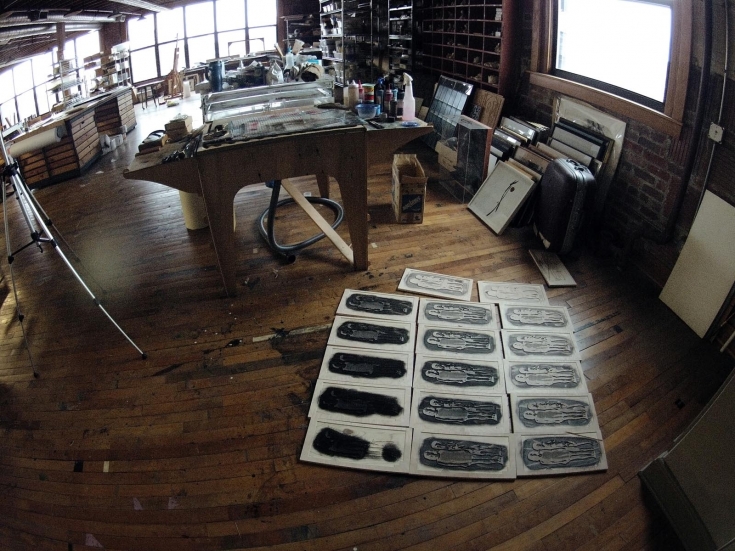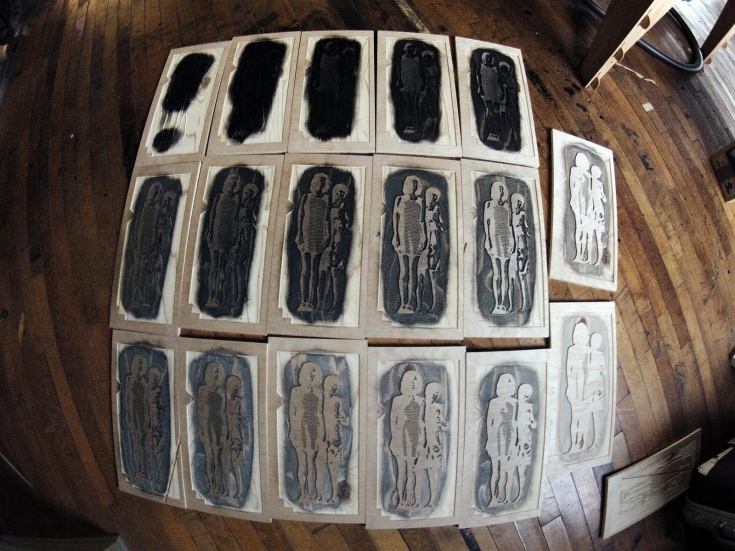My intern this year, Madeline Cass (who is responsible for scanning and data entry of my collection of Japanese prints – see woodblockprints.org), and her roommate, Kit Landwehr, modeled for me June 8. Years ago I’d really loved printing the stripes of a seersucker robe and Kit’s striped dress was a natural for another attempt when barenforum.org hosted its 54th print exchange – this one all moku-hanga. It had been a long time since I’d participated in a Baren exchange (I’m a co-author of the Baren web site and active on its steering committee, Baren Coucil). In the late 90’s and early 2000’s, Baren exchanges were almost exclusively moku-hanga (traditional Japanese printmaking technique) – now most members print Western-style (oily) relief prints and us Japanese technique folks are a small minority. Sigh. Time and change!
I carved 18 blocks for this print, designing the blocks exactly as if I’d intended to hand-carve. Then I generated the code to control my CNC router and carved the blocks on a half-sheet of half-inch birch plywood. Most of my blocks since 2004 have been machine-carved this way.
Kento registration (notches to receive the paper carved into each block) makes it quick and easy to achieve the very precise registration required to reprduce tiny details of eye, hair, clothing, stripes, etc and the hosoban sheet size for the baren exchange makes it a snap to print quickly. I carved and printed the entire stack of (36) sheets in long two days and, to my eye, these are gorgeous little jewels. I LOVE the soft gray of the dry graphite pigment I used (plus some Guerra Paint and Pigment Channel Black pigment dispersion to make the darker values for blocks 9-17.
Normally the Baren exchanges require 31 prints, but there were only 18 moku-hanga printmakers participating, so only 19 were ultimately required. I selected a dozen prints for a ‘first edition’ of 12, and the remaining 19 decent prints for the ‘Baren edition’.

